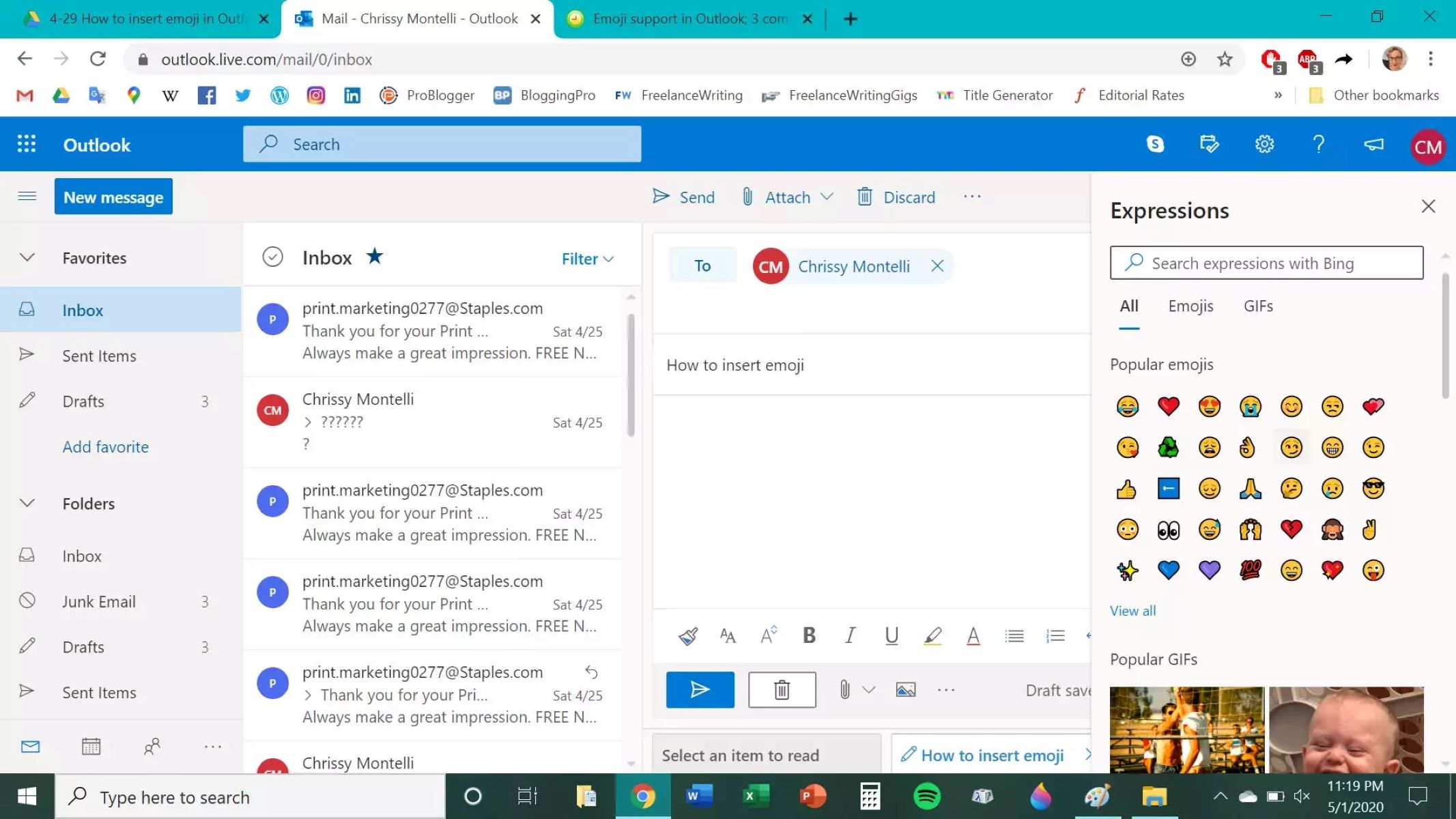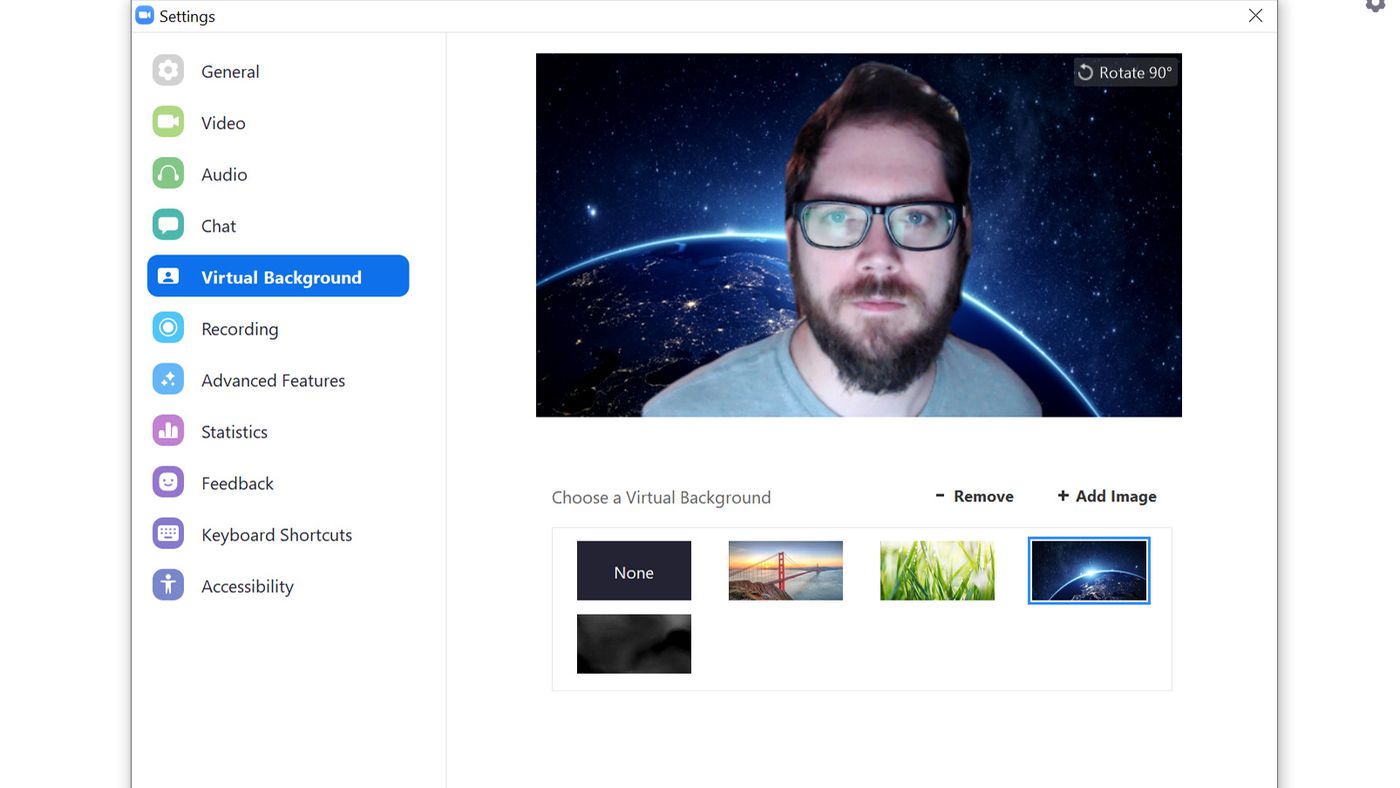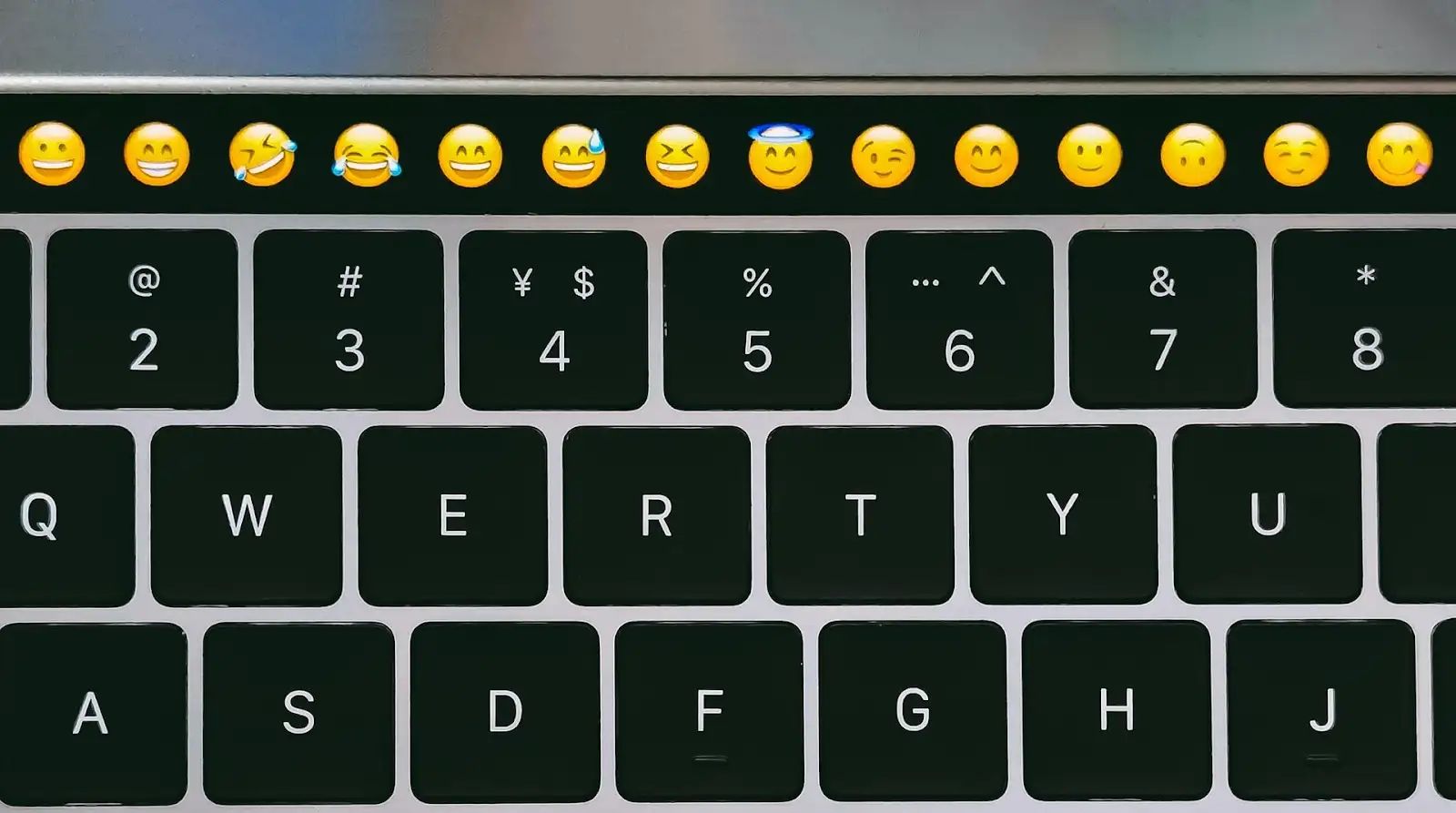Introduction
Welcome to the world of email communication, where words play a crucial role in conveying our thoughts and emotions. But what if there was a way to add a little extra flair and expressiveness to your emails? That’s where emojis come in. Emojis are small pictographs that represent emotions, objects, and ideas, and they have become an integral part of our digital communication.
In this article, we will explore how to add emojis to your Outlook email messages. Whether you want to add a smiley face to brighten up your email or convey your excitement with a thumbs-up emoji, we’ve got you covered. We’ll walk you through enabling emoji support in Outlook, show you different ways to add emojis to new emails, reply or forward emails, and even include emojis in your email signature.
Using emojis in email can add a personal touch, make your messages more engaging, and help ensure your tone and intent are accurately conveyed. They can enhance the clarity of your message, inject some humor, or simply show your recipients that you’re excited about something. With Outlook’s support for emojis, you can now go beyond plain text and elevate your email communication to a whole new level.
However, it’s important to note that the use of emojis should be done judiciously and in appropriate situations. While they can enhance your communication, overusing emojis or using them in a professional setting might not be well-received. It’s always a good idea to consider your audience and the context before adding emojis to your email.
In the following sections, we’ll guide you through the process of enabling emoji support in Outlook, different ways to add emojis to your emails, and some useful tips and considerations to keep in mind. So, let’s dive in and discover how you can easily add some visual charm to your Outlook emails with emojis!
What are Emojis and Why Use Them in Email?
Emojis are small digital icons or pictographs that are used to convey emotions, express ideas, or represent objects in a visually appealing way. They have become an integral part of online communication and are commonly used in instant messaging, social media posts, and now, even in emails.
So, why should you consider using emojis in your email communication? Here are a few reasons:
- Enhanced Expressiveness: Emojis allow you to add a layer of emotional context to your words. Sometimes, it can be challenging to convey tone and intent through text alone. Emojis help bridge that gap by adding visual cues. Whether you want to show excitement, express gratitude, or convey humor, emojis can help enhance your message’s expressiveness.
- Improved Clarity: Text-based communication often lacks the nuances and non-verbal cues of face-to-face conversations. Emojis can help clarify your message and prevent misinterpretation. For example, a simple smiley face can indicate the friendly tone of your message, while a thumbs-up emoji can convey agreement or approval.
- Engaging and Memorable: Emails can sometimes feel dry and impersonal. Adding emojis can make your message more engaging and memorable. Emojis catch the reader’s attention and can create a positive association with your email.
- Universal Language: Emojis are a global phenomenon. They transcend language barriers and can be understood by people from different cultures and backgrounds. By using emojis in your email, you can communicate more effectively with a diverse audience.
- Personal Touch: Including emojis in your emails can help show your personality and add a human touch to your communication. It can make your message feel warmer and more approachable, leaving a lasting impression on the recipient.
While emojis can be a fun and effective addition to your emails, it’s important to use them judiciously and consider your audience and the context. In professional settings or formal communications, it’s best to use emojis sparingly, if at all, to maintain a professional tone. It’s always a good practice to know your audience and use emojis appropriately to ensure effective and meaningful communication.
In the next section, we’ll explore how to enable emoji support in your Outlook email, so you can start adding these expressive visual elements to your messages.
Enabling Emoji Support in Outlook
Before you can start using emojis in your Outlook emails, you’ll need to ensure that emoji support is enabled. By default, Outlook has support for emojis, but it’s always a good idea to verify that it’s enabled on your system. Here’s how you can do it:
- Open Outlook on your computer and click on the “File” tab in the top left corner.
- From the dropdown menu, select “Options.”
- In the Outlook Options window, click on the “Mail” tab.
- Scroll down until you find the “Compose messages” section, and then click on the “Stationery and Fonts” button.
- In the “Signatures and Stationery” window, click on the “Personal Stationery” tab.
- Under the “New mail messages” section, click on the “Font” button.
- In the “Font” window, make sure that the “Smiley face” icon is selectable. If it is greyed out, it means that emoji support is not enabled.
- If the “Smiley face” icon is greyed out, click on the dropdown menu next to “Character set” and select “Unicode (hex).”
- Click “Ok” to save your changes and exit the options menu.
Once you have enabled emoji support in Outlook, you are ready to start adding emojis to your email messages. The next sections will guide you through different ways to incorporate emojis into your Outlook emails.
Note: Enabling emoji support in Outlook ensures that you can see and use emojis in your emails. However, the recipients of your emails also need to have emoji support in their email clients to see the emojis you include. Keep this in mind when using emojis in your professional or formal communications.
Adding Emojis to a New Email
Now that you’ve enabled emoji support in Outlook, you can begin adding emojis to your new email messages. There are a few different methods you can use to incorporate emojis:
1. Emoji Picker:
In the Outlook toolbar, click on the “Insert” tab, and then click on the “Emoji” icon. This will open the emoji picker, which displays a wide range of emojis categorized into various groups. Simply browse through the different categories, select the emoji you want to use, and click on it to insert it into your email.
2. Keyboard Shortcuts:
If you prefer using keyboard shortcuts, Outlook provides a couple of shortcuts to quickly insert emojis. Pressing “Windows key + .” (period) or “Windows key + ;” (semicolon) will open the emoji picker directly. You can then use the arrow keys to navigate through the emojis and press Enter to insert the selected one into your email.
3. Copy and Paste:
If you have a specific emoji in mind or have recently used one, you can copy and paste it directly into your email. Search for emojis on websites or use emoji keyboards on your device to find the desired emoji, then simply copy it and paste it into your email message.
4. Manual Insertion:
If you know the Unicode value of a particular emoji, you can insert it manually into your email. Open the emoji picker by following the steps mentioned above and click on the emoji you want to insert. In the emoji detail view, you’ll find the Unicode value listed. To manually insert the emoji, type the Unicode value (e.g. 😀) directly into your email, and Outlook will convert it into the corresponding emoji.
Remember, you can add emojis to your email text, subject line, or even in the email’s signature if desired. However, it’s essential to use them appropriately and consider the context and tone of your message.
Adding Emojis to a Reply or Forward Email
When replying to or forwarding an email in Outlook, you have the option to include emojis to add a touch of expressiveness to your response. Here’s how you can do it:
1. Reply or Forward the Email:
Start by opening the email you want to reply to or forward. Click on the “Reply” or “Forward” button in the Outlook toolbar to begin composing your response or forwarding the email to another recipient.
2. Access the Emoji Options:
In the email composition window, you’ll find the formatting toolbar at the top. Look for the smiley face icon, which represents the emoji options. Click on it, and a mini emoji picker will appear.
3. Insert Emojis:
Browse through the emoji categories and click on the desired emoji to add it to your email. The emoji will be inserted at the cursor’s current position in the body of the email.
4. Customize Emoji Appearance:
Outlook provides options to customize the appearance of emojis. Hover over an emoji in the picker, and you’ll see three dots appear in the top-right corner of the emoji. Click on these dots to access additional options, such as changing the skin tone or selecting different variations of the emoji.
5. Adjust Emoji Size:
If you want to resize the emoji, you can do so by selecting the emoji and then using the formatting options in the Outlook toolbar. Increase or decrease the font size to adjust the emoji’s size within your email.
By following these steps, you can easily enhance your email responses or forwarded messages with emojis. However, remember to use them appropriately and consider your audience and the context of your message.
Using the Emoji Picker in Outlook
Outlook provides a convenient emoji picker tool, making it easy to add expressive emojis to your emails. Here’s how you can use the emoji picker:
1. Open Outlook and Compose a New Email:
Launch Outlook on your computer and start composing a new email by clicking on the “New Email” button. This will open a blank email composition window where you can enter your email content.
2. Access the Emoji Picker:
In the toolbar at the top of the email composition window, click on the “Insert” tab. You’ll notice an icon that resembles a smiley face. This is the emoji picker. Clicking on this icon will open the emoji picker panel.
3. Browse and Select Emojis:
Once the emoji picker is open, you’ll see a wide range of emojis categorized into different sections. You can scroll through these sections to find the emoji that best suits your message. To select an emoji, simply click on it, and it will be added at the cursor’s current position in the email body.
4. Search for Emojis:
If you’re looking for a specific emoji, you can use the search bar at the top of the emoji picker. Type in keywords related to the emoji you want, such as “smile” or “thumbs up,” and the emoji picker will display relevant options.
5. Customize Emoji Appearance:
Outlook allows you to customize the appearance of selected emojis. When you click on an emoji in the picker, you’ll see three dots appear at the top-right corner of the emoji. Clicking on these dots will provide you with options to change the skin tone of the emoji or select different variations.
6. Close the Emoji Picker:
Once you have selected and inserted your desired emojis into the email, you can close the emoji picker by clicking outside of the picker panel or by clicking on the “Close” button at the top-right corner of the emoji picker.
Using the emoji picker in Outlook makes it convenient to find and add emojis to your emails. Experiment with different emojis to add a touch of personality and emotion to your messages. However, remember to use emojis in moderation and consider the context and tone of your email.
Inserting Emojis Manually Using Unicode Values
In addition to using the emoji picker, Outlook also allows you to manually insert emojis into your emails using their Unicode values. If you know the specific Unicode value of an emoji, you can follow these steps to insert it into your email:
1. Open Outlook and Compose a New Email:
Launch Outlook on your computer and start composing a new email by clicking on the “New Email” button. This will open a blank email composition window where you can enter your email content.
2. Find the Unicode Value:
Look for the emoji you want to insert and find its corresponding Unicode value. Unicode values are hexadecimal codes that represent each emoji. You can find the Unicode value of an emoji through various online resources that provide Unicode charts or by using emoji search websites.
3. Insert the Emoji:
To manually insert an emoji using its Unicode value, place your cursor at the desired position in the email body and type the Unicode value using the hexadecimal format. For example, the Unicode value for a smiling face emoji is U+1F600. To insert it, type 😀 at the cursor’s position.
4. Verify Emoji Appearance:
After inserting the Unicode value, you might not see the actual emoji displayed in the email composition window. However, once you send or preview the email, the Unicode value will be replaced by the corresponding emoji, and the recipient will see it as intended.
Note: The ability to see the emoji in the composition window might depend on the version of Outlook or the email client being used. It’s always a good practice to send a test email to yourself or check the preview to ensure the emoji is displayed correctly.
By manually inserting emojis using their Unicode values, you have greater flexibility in incorporating emojis that might not be available in the standard emoji picker. This method allows you to include a wider range of emojis to express yourself creatively.
Adding Emojis to Your Email Signature
An email signature is a great place to add a personal touch to your outgoing messages. Including emojis in your email signature can help make it more visually appealing and add a touch of personality. Here’s how you can add emojis to your email signature in Outlook:
1. Open Outlook and Go to Options:
Launch Outlook and click on the “File” tab in the top-left corner. From the dropdown menu, select “Options.”
2. Navigate to Signatures:
In the Outlook Options window, click on the “Mail” tab. Scroll down until you find the “Create or modify signatures for messages” section and click on the “Signatures” button.
3. Select or Create a Signature:
In the “Signatures and Stationery” window, select the email account you want to add the emoji signature to. If you want to create a new signature, click on the “New” button and give it a name.
4. Edit Signature Text:
In the “Edit Signature” section, you can enter and format your signature text. To add an emoji, place the cursor where you want the emoji to appear and use one of the methods mentioned earlier, such as using the emoji picker or manually inserting the emoji’s Unicode value.
5. Customize Emoji Appearance:
After adding an emoji to the signature, you can customize its appearance by changing the font size or adjusting its position within the signature. Use the formatting options provided in the signature editor to make these adjustments.
6. Apply and Save the Signature:
Once you have added the emoji to your signature and made any necessary adjustments, click on “OK” to save the changes. Make sure the newly created or edited signature is selected as the default signature for the desired email account.
Now, every time you compose a new email or reply to a message, your email signature with the emoji will be automatically added to the end of your emails, allowing you to express yourself visually and add a unique touch to your outgoing messages.
Remember, when adding emojis to your email signature, it’s important to use them sparingly and consider your audience and the professional context in which you are communicating.
Limitations and Considerations When Using Emojis in Outlook Email
While emojis can enhance your email communication, it’s important to be aware of some limitations and considerations when using them in Outlook:
1. Platform and Version Compatibility:
Not all email clients and platforms support emojis. While Outlook has built-in support for emojis, the recipient’s email client may not display them correctly or at all. Before using emojis extensively in your emails, consider whether your recipients will be able to see them as intended.
2. Professional Tone:
Emojis can bring a lighthearted and friendly tone to your emails. However, in professional settings or when communicating with formal contacts, it’s essential to consider the appropriateness of emojis. Overusing emojis or using them inappropriately can be perceived as unprofessional. Use emojis judiciously and gauge the tone and formality of your recipients before including them.
3. Cultural Sensitivity:
Emojis can have cultural connotations and interpretations. What may be perceived as positive or neutral in one culture might be interpreted differently in another. Be mindful of using emojis that may carry cultural implications or potential misunderstandings. Consider the diversity of your audience and avoid using emojis that may be offensive or misinterpreted.
4. Accessibility:
Some individuals may have visual impairments or rely on assistive technologies to read emails. Emojis that are purely visual may not be conveyed effectively to these users, potentially affecting their understanding of your message. When using emojis, ensure that they are not the sole means of conveying important information and that your message is clear without relying only on visual elements.
5. Mobile Device Display:
Emails are frequently accessed on mobile devices, where the screen size may be smaller. Emojis can appear differently on various mobile platforms, potentially leading to unintended or inconsistent visual representations. Test your emails on different devices and platforms to ensure the emojis are displayed correctly and enhance the message as intended.
By being mindful of these limitations and considerations, you can effectively incorporate emojis into your Outlook emails while ensuring your message is received and understood appropriately.
Conclusion
Adding emojis to your Outlook emails can bring a touch of creativity, expressiveness, and personalization to your email communication. They can enhance clarity, convey emotions effectively, and make your messages more engaging. However, it’s important to consider certain factors when using emojis in Outlook:
First, ensure that emoji support is enabled in your Outlook settings to see and use emojis. Next, explore different methods to incorporate emojis, such as using the emoji picker, keyboard shortcuts, copy and paste, or inserting emojis manually using Unicode values.
When adding emojis, use them judiciously and consider your audience and the context of your message. In professional settings, limit the use of emojis to maintain a professional tone and avoid potential misunderstandings.
While emojis can enhance communication, be mindful of possible limitations. Confirm that your recipients’ email clients support emojis and consider cultural sensitivities, accessibility for visually impaired users, and the potential variation in emoji display on different platforms and devices.
By understanding how to effectively add emojis to your Outlook emails and applying these considerations, you can express yourself clearly and creatively while avoiding any unintended miscommunications or distractions.
So go ahead, unleash your creativity, and add some visual charm to your Outlook emails with emojis. Have fun, but always remember to strike the right balance and use them appropriately to enhance your email communication.

























